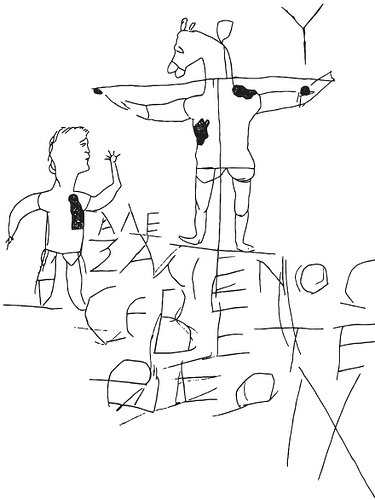Tacitus was writing about events in 64CE, to be precise the Great Fire of Rome and where a jewish sect (chrestus worshippers) were blamed for setting the fire.
Tacitus was reporting the beliefs of Christians, probably not those that existed before he was born, but the beliefs of contemporaries.
I have debunked the evangelist and moronic arguments about Tacitus many times on these pages…but hey ho…here we go again.
Tacitus and that Jesus Passage:
Tacitus was a Roman Historian writing at the turn of the 1st Century CE, i.e between 90CE and 120CE. Many theists make much of a brief mention of a “Chrestus” and use it to bolster their beliefs without ever realising what the passage actually says.
Just to make sure no fantasy mad theist argues the point here is the passage in English and Latin:
“Consequently, to get rid of the report, Nero fastened the guilt and inflicted the most exquisite tortures on a class hated for their abominations, called Christians by the populace. Christus, from whom the name had its origin, suffered the extreme penalty during the reign of Tiberius at the hands of one of our procurators, Pontius Pilatus, and a most mischievous superstition, thus checked for the moment, again broke out not only in Judæa, the first source of the evil, but even in Rome, where all things hideous and shameful from every part of the world find their centre and become popular. Accordingly, an arrest was first made of all who pleaded guilty; then, upon their information, an immense multitude was convicted, not so much of the crime of firing the city, as of hatred against mankind.”
In Latin: ergo abolendo rumori Nero subdidit reos et quaesitissimis poenis adfecit, quos per flagitia invisos vulgus Chrestianos appellabat. auctor nominis eius Christus Tibero imperitante per procuratorem Pontium Pilatum supplicio adfectus erat; repressaque in praesens exitiabilis superstitio rursum erumpebat, non modo per Iudaeam, originem eius mali, sed per urbem etiam, quo cuncta undique atrocia aut pudenda confluunt celebranturque. igitur primum correpti qui fatebantur, deinde indicio eorum multitudo ingens haud proinde in crimine incendii quam odio humani generis convicti sunt. [Wiki]
The most anyone can get out of this rather inaccurate passage (Pilate was Prefect not Procurator and there was not an 'immense multitude" of christians anywhere much less in Rome in 60CE) Is that a Jewish Cult of Chrestus was in Rome in about 64CE according to reports some 30 - 50 years later.
Not very convincing evidence for a Jesus, even for a rabid theist now is it?
